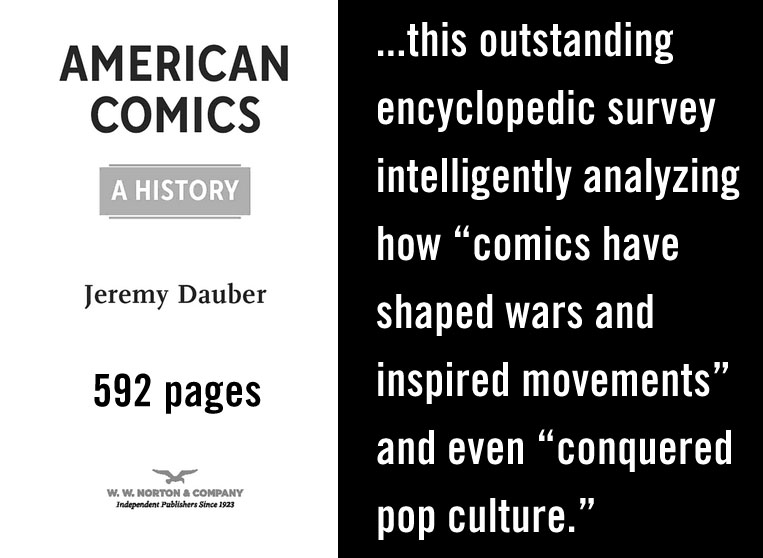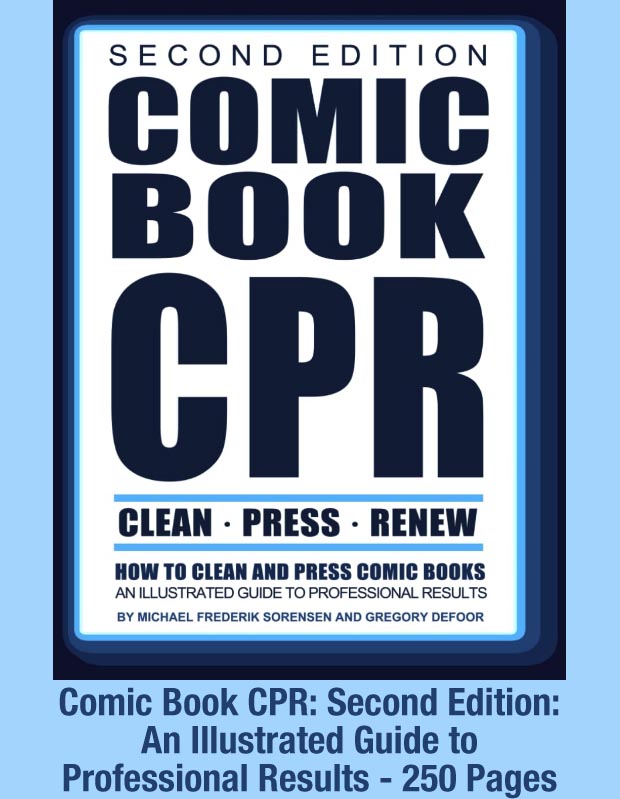How To Make Your Own Comic Book
How To Make Your Own Comic Book
Making a "comic book" is as simple as putting your drawing and words onto paper, assembling those few pages together, and placing a cover on the front and there it is: you've got a comic book.
But, rather than passing around (or selling) this original art, you can produce copies of your pages and then sell/give away the copies.
Traditionally, the comic book industry was focused almost entirely upon the reproduced artwork onto printed pages, most often using gravure or offset printing methods.
The 20th Century Comic Book Page
If you've seen original comic book artwork from the many decades of comic book making from the 20th century, you will have noted how often the original art is scribbled on, contains whited-out area, pasted-on corrections, and various dings, stains and changes. While you would be shocked to see a piece of art in a museum maltreated in such a way, in that old world of comic book production, the original art page was usually just a step in the process toward the final item which is looked at by the reader, that is, the physical printed pages i.e., the "product," and because of this original art was often discarded after the production process had occurred. What mattered was the printed work, almost to the complete neglect of the original art (and this is why original art from the early ears of the comic book are rare). This attitude began to change in the 1960s when the comic book industry began to slowly rise from a position in the culture pantheon of being "gutter-entertainment" into being something relevant as an "art" all it's own.
Since the mid-1980s, computer-generated and computer-edited art began taking over the comic book production cycle (this followed mainly in the wake of Apple Computer's Macintosh line which created a revolution in the graphic design community), it is has become increasingly infrequent for physical pages of art to be made.

Hand-Drawn Comic Books
You take a piece of blank paper and you create a series of panels and within the panels you tell a story.
The main tools of hand-drawn comic book making are three items: the pencil, the pen, and a brush.
Some artists have used "blue pencil" for drawing their pages. There are two main reasons for this, one mostly obsolete and the other more useful today:
The "mostly" Obsolete method of using Blue Pencil
(1) A now out-of-date reason a blue-leaded pencil was used in the decades prior to computer scanning of pages is due to the use of a process called P.M.T (photo-mechanical-transfer) or also sometimes called "Stat." A special "P.M.T." camera was used to take a negative photograph of artwork, and matching this onto a "positive" sheet, a single image of the artwork was reproduced at any size needed onto a white, glossy sheet of specially coated paper. This kind of camera could not "see"blue, so there was minimal need to erase blue pencil marks as they would not be picked up by the P.M.T. camera when making the artwork ready for printing. This allowed artists to skip the labour of erasing pencil from off a page before it proceeded through the printing production process.

"Blue Pencil" was a standard method used throughout the beginning of comic book making in the 1930s right up until the 1980s when computer reproduction began to take over the comic book industry.
Examples of how P.M.T. Photo Mechanical Transfer was used for traditional comic book making:
- To reduce a piece of artwork. For example, if you drew your comic book page at twice the size of what it would finally be printed at, a P.M.T. camera would be used to make your over-sized art the correct size for printing.
- To enlarge your artwork.
- To create copies of your art to reuse on an original page. For example, if you drew a page which contained a repeating image, pattern or object. Rather than redrawing these items over and over, by using a P.M.T. camera an artist could have as many reproductions made as needed, and then after trimming them down from the larger white positive transfer page from the P.M.T. Camera process, these "extra" images could be pasted down onto the original artwork page.
(2) Another reason blue pencil is used is because it is a very light color such that after penciling a page an artist can proceed to ink the artwork with greater contrast between the pencil art and the black ink and not necessarily need to erase the blue pencil afterward. Simply put, blue pencil allows for significantly lighter preliminary drawing than a regular leaded pencil allows.

Draw the physical page, ink the physical page, print copies of the physical page
After drawing physical pages for a comic book story, organizing the pages into order, and adding any extraneous necessary items (cover, back cover, inside covers, additional pages for other purposes such as advertising or announcements or promotions for an artists other works) the assembled package of pages can be taken to a "quick copy" business for reproducing as many copies as desired.
But what if you want to use a computer, and upload the pages to an online printing company for making copies?
Computer-aided artwork
In the Past
Though computers have been used to create amateur comic books almost from the very beginning of the advent of lower-costing equipment from Microsoft and Apple, it was during the 1990s that the digital transformation of the comic book industry began, utilizing computer-driven coloring techniques that replaced labour-intensive hand-made methods of coloring that relied upon rubylith and cutting plating-mattes using xacto-knifes. (There were computer-based production equipment prior to this, expensive systems sold by Compugraphic and other more-experimental systems using IBM and Zenitron equipment.)
The first years of computer-based coloring for comic books were problematic, with over-saturated inks and out-of-control-color palettes making some comic books difficult to read or look at regardless of the quality of the actual drawings.
But as coloring techniques improved, so did the skill at using computers to actually generate artwork.
Programs like Altsys Freehand, Adobe Photoshop and Adobe Illustrator were instrumental in creating professional-level computer-based drawing for comic books. Originally these computer tools were used most often for editing artwork that had been scanned into a computer, the results then printed out on anything from a dot-matrix printer, to an Apple Laserprinter, or through high-resolution Compugraphic RIP ("Raster Image Processor") work stations for output through photomechanical printers which were used as substitutes for the traditional P.M.T cameras.
The first "all digital" comic book creation was Shatter by Mike Seanz which appeared for the first time in 1985 and was entirely composed on an Apple Macintosh computer.
Modern Computer Comic Book making
Adobe Corporation still makes the basic profressional-level artwork equipment for the graphic design world and for artists. However, there are now so many alternatives that inexpensive programs proliferate throughout the digital world and are available for nearly every platform that exists, from smartphones, to tablets, to full-size desktop computers.
For making a comic book today, the aid of a computer for editing hand-drawn artwork, or for creating entirely digital artwork is a matter of choice depending on budget and on goals. While Wacom makes the most popular and praised digitizing drawing tablets, many alternatives exist, such as lower-cost Yiynova. Many smartphones, for example the "Note" line from Samsung, come with digital drawing programs installed with a built in stylus.
A digitizing drawing tablet makes the creation for art directly within a software program possible. For example, using a Wacom or Yiynova digital pad, an artist can draw directly within (for example) Adobe Photoshop and then likewise color and prepare the artwork for printing reproduction.

Original Page February 5, 2016 | Updated March 2021


